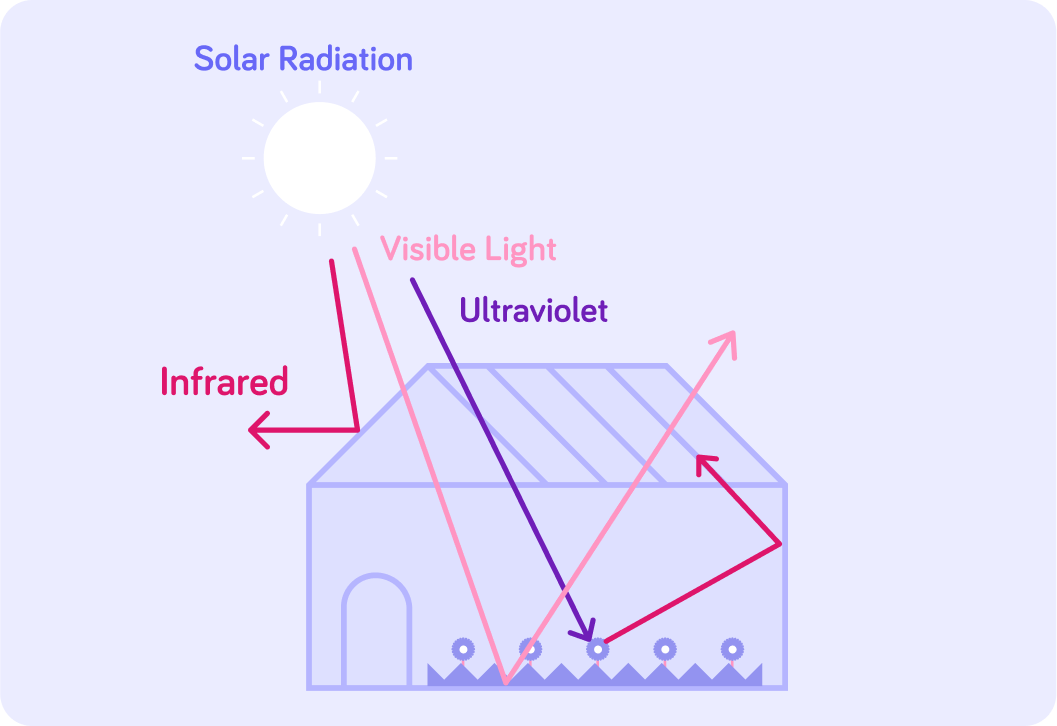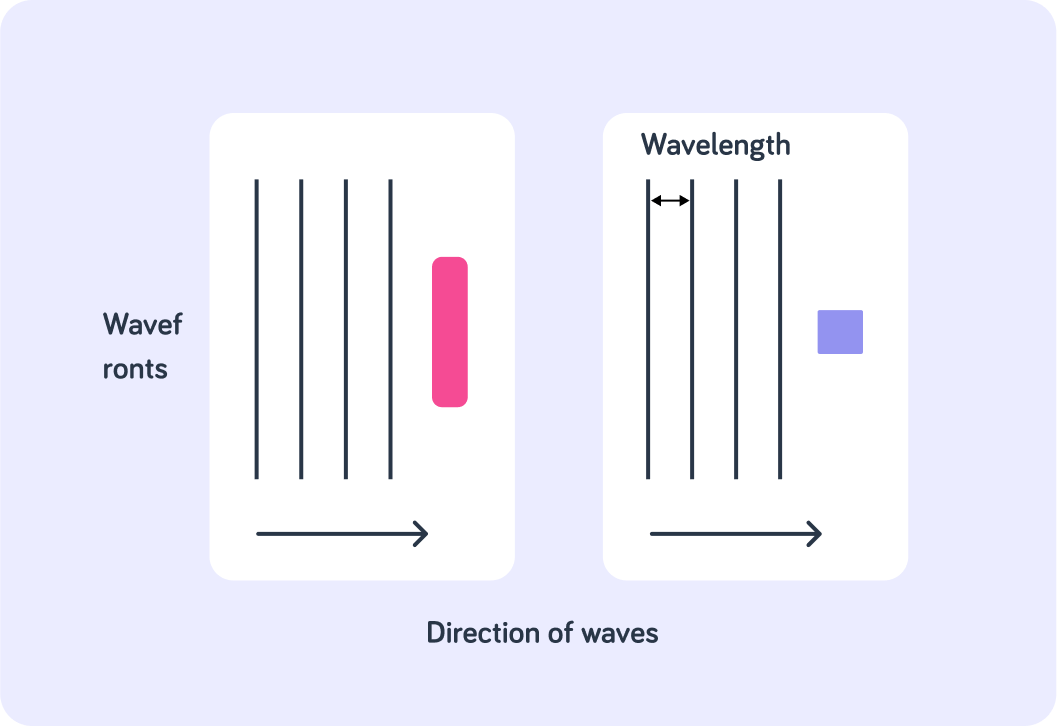YOU ARE LEARNING:
Effect of Wavelength and Substance on Wave Movement

Effect of Wavelength and Substance on Wave Movement
The wavelength decides how much of a wave's energy is absorbed, transmitted or reflected at an interface.
This lesson recaps the different properties of electromagnetic waves. It also looks at what it means that each of the waves have different wavelengths.
Think about when an electromagnetic wave comes into contact with an object. Which of these statements is true?

It is the wavelength of an EM wave that decides how much of a wave's energy is absorbed, transmitted or reflected at an interface. Remember from earlier lessons that this is why we see things to have different colours. An object appears to be a certain colour because only wavelengths of that colour are reflected. The others are absorbed.
If a wave is absorbed by an object, does the wave continue to propagate?

If the wave is absorbed, its energy is transferred into thermal energy. This thermal energy then gets distributed amongst the particle that make up the medium. This means that the wave signal is lost.
If you leave laundry out on a hot sunny day, which object will be hotter to the touch when it's dry and you take it down?

Greenhouses make use of the effect of wavelength on absorption, transmission and reflection.
They do that to increase the temperature inside.

Ultraviolet radiation from the Sun is mostly transmitted by the glass. Does this have a "short" or a "long" wavelength?


The plants, soil and floor in the greenhouse absorb ultraviolet radiation which increases their temperature. They then emit infrared radiation which is mostly reflected by glass, and gets trapped inside the greenhouse. Does infrared light have a "longer" or a "shorter" wavelength than UV light?


The infrared radiation emitted from the plants and the floor is reflected off the inside walls of the greenhouse so it cannot escape.
This means that the amount of energy in the greenhouse rises which in turn means that its temperature increases.

Whether a wave is reflected or not depends on how big the surface is in comparison to the wave's wavelength. Which wave do you think is more likely to get reflected?
A) The one on the left B) The one on the right


Only the wave on the left will be reflected.
The wave on the right will be diffracted, meaning it will just bend around the object.

So whether or not a wave gets reflected depends on the wavelength and on the width of the object as seen by the wave.
If the width is more than 5-10 wavelengths, then we make the approximation that the surface is infinite in extent and model the interaction as a "reflection".

The wavelength of visible light is approximately 400-700 nm. Will a mirror always reflect visible light? Answer "yes" or "no".


A mirror will always reflect visible light!
If the width of the mirror is 5-10 times the wavelength, the mirror will reflect the light. Now, visible light has a maximum wavelength of 700 nanometres. 700nm×10=7000nm, but 7000 nm is only 0.0007 cm. We can't make a mirror that narrow!

What do we call the thing that happens to the wave on the right?


The strongest diffraction occurs when the size of the gap (or object) is similar to the wavelength of the waves.
For example, the wavelength of radio waves range between 1 millimetre to 100 kilometers. They often get diffracted by objects like buildings or mountains, but if the object is too big for the wave it might obstruct the signal.

Now what about the effect of wavelength on refraction?
What needs to happen for refraction to occur for an electromagnetic wave?

Where do electromagnetic waves travel faster?

Refraction occurs when waves pass through the boundary between one medium and another or through a medium of varying density. This can cause which properties of waves to change?

You can select multiple answers
Remember that EM waves travel the fastest when they travel through a vacuum.
Vacuums are empty of particles, so the more particles there are in the medium the EM wave is travelling through (the denser the medium is), the slower the EM wave will travel.
When an EM wave encounters a more dense medium and slows down, what happens to its wavelength?

The change in wavelength affects how much the wave's direction changes. We can see this clearly when we refract white light with a glass prism.
White light contains all wavelengths of visible light, and each of these will have a different change in wavelength and therefore also different changes in speed. This means that they will all change direction slightly differently, so they emerge emerge side by side, like a rainbow.

How do we determine what type of wave a wave is?
Is it smarter to use a property that can change or a property that cannot change under different conditions to determine what type of wave a wave is?

What property of an electromagnetic wave will never change?

So we use the frequency of an electromagnetic wave to determine what type it is out of the spectrum.
This is because the speed and wavelength of an EM wave can change due to refraction, but frequency (and energy) will never change.
To sum up!
When an electromagnetic wave is absorbed...
its energy is converted into thermal energy. It does not continue to propagate.
An electromagnetic wave is reflected...
it does not lose energy. Its speed and wavelength remain the same.
An electromagnetic wave is diffracted...
when it comes across an object or slit which is of a comparable size to it the wavelength of the wave.
An electromagnetic wave will be refracted...
when it is transmitted into a new medium that varies in density. This will cause its speed, wavelength and direction to change.
So a wave might change its speed or wavelength...
but its frequency (and energy) will never change! This is why we use frequency to determine what kind of wave a wave is - not its speed or wavelength.
